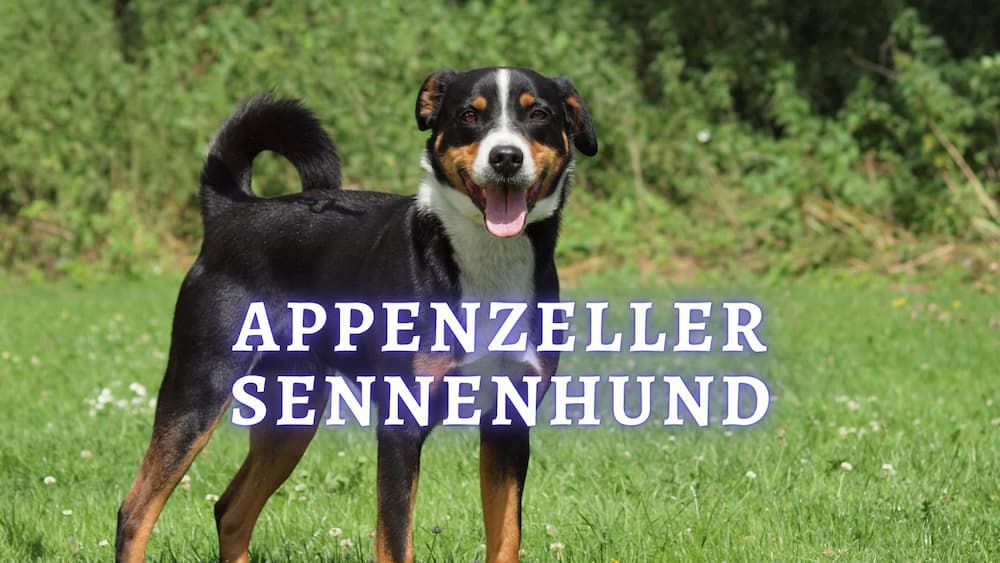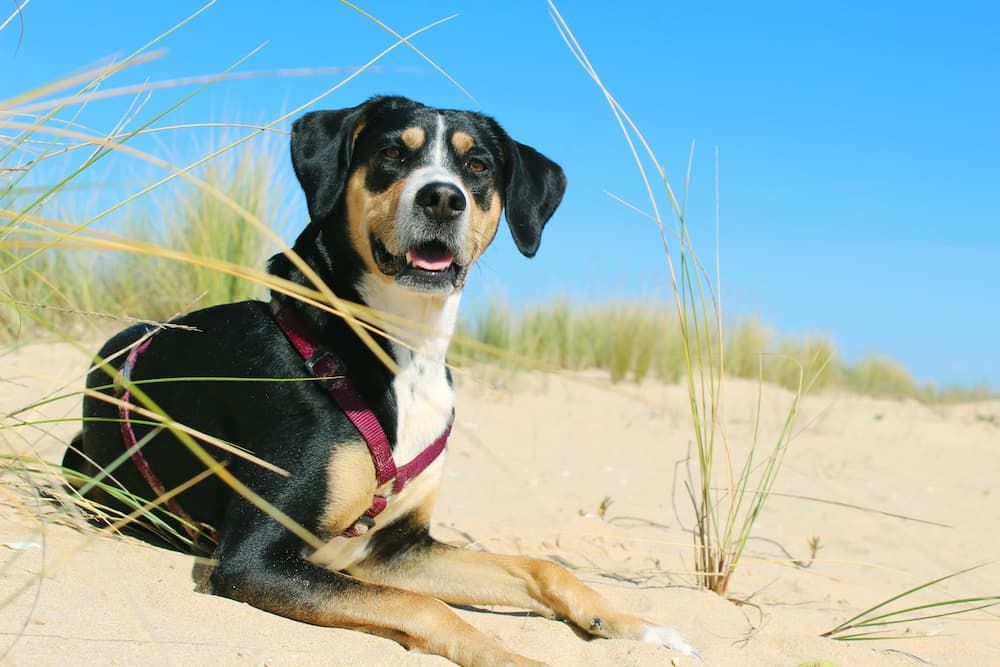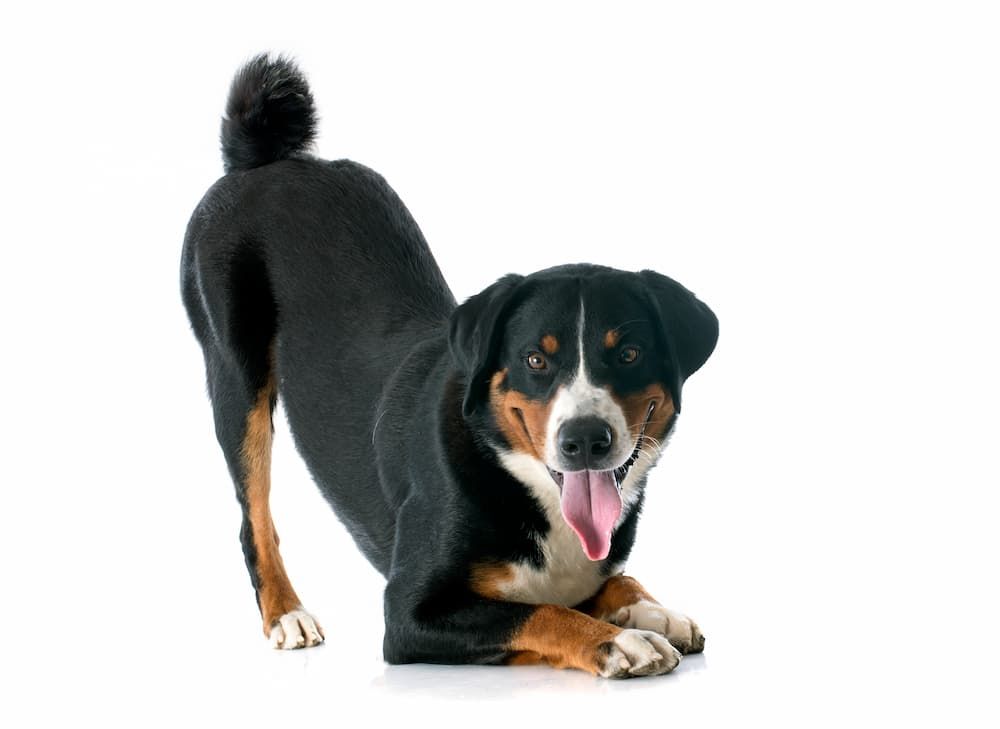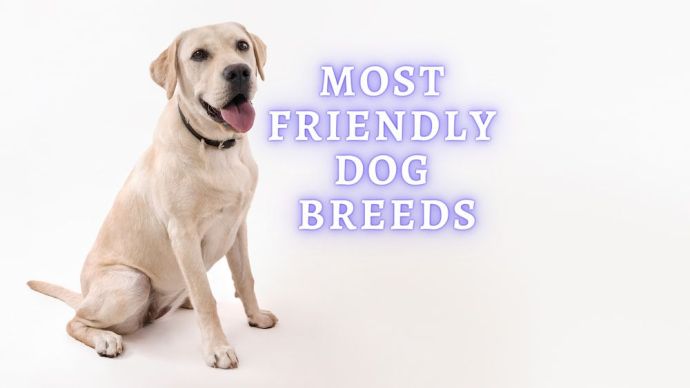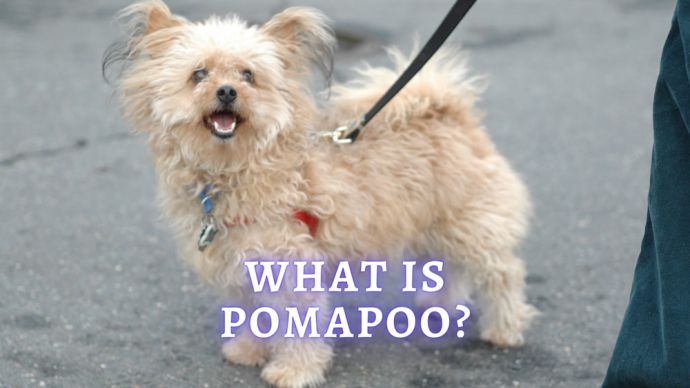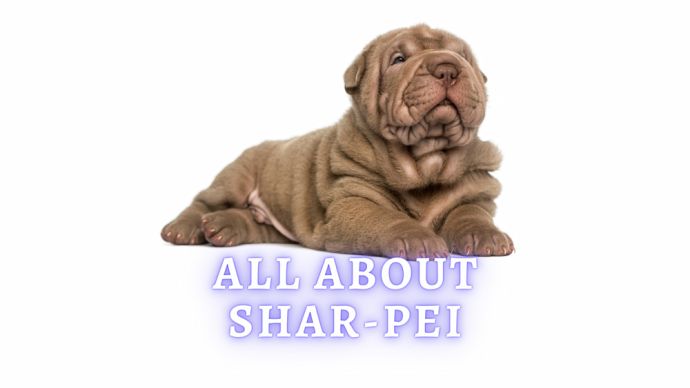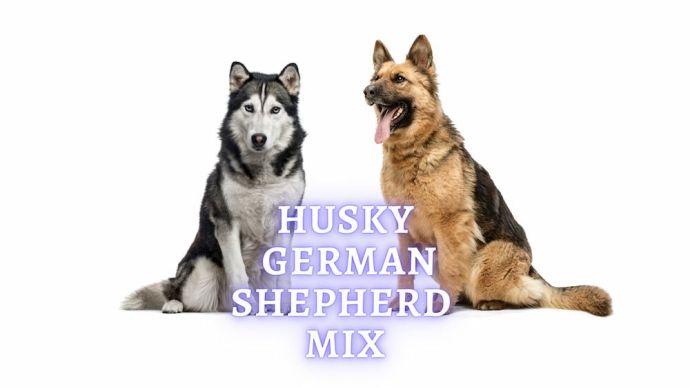Appenzeller Sennenhund: Life Span, Breed Info and Characteristics
Written by:
Author: Vicki Smirnova
Vicki Smirnova is a professional writer and editor who adores animals and helps readers get along well with their pets. She has been working in digital media for more than 5 years and has great experience writing content about lifestyle, including pets. Vicki specializes in dog health and nutrition, cat feeding, dog training. She is an aquarium lover and is passionate to write about fish care at home. Also, Vicki headed several websites and worked as a news editor.
View all 244 articlesLearn about our editorial process and veterinary review board.
Viewed: 313
Updated on: 03/23/2022
Switzerland is a country that is famous for Alpine meadows with herds of cows. From ancient times to the present day, dogs have acted as reliable companions of the shepherds. And Switzerland is the birthplace of these types of dogs, called Sennenhund. The list of these dogs also includes the Appenzeller Sennenhund, which has many positive qualities.
The Appenzeller Sennenhund is one of the ten most popular dogs globally, famous for being the working dog of Alpine shepherds. It stands out for its bright color and calm demeanor, as well as its rather interesting history. The Appenzeller Sennenhund is not a byproduct of cross-breeding but as a result of natural selection, making it rather unique in that respect.
An Appenzeller can quite happily live in a domesticated environment such as an apartment or private house. Like many dogs of its size, and Appenzeller takes up little space in the home, but they tend to loyally follow the owner from room to room, so be prepared for a lot of love and attention. While they get plenty of exercise remaining hot on your heels all day, it is still a good idea to take your Appenzeller Sennenhund on walks and to let them roam the garden so that they can move freely.
The price for an Appenzeller Sennenhund puppy is an average of $600 – $1500 USD. These pets are valued for their friendly, responsive nature, excellent physical shape, and a high level of mutual understanding with humans. In addition, they are cute, do not require complex care, and are balanced and easily trainable.
Characteristics
| Weight | 48 to 55 pounds |
| Height | 1’7″ – 1’10” |
| Colors and Patterns | Always be tricolored. The primary color is black; sometimes, there are instances of brown color. |
| Lifespan | 12-14 years |
| Suitable for | Herding, farm dog, family dog |
Appenzeller Sennenhund History
The Appenzeller Sennenhund is an ancient breed of dog that is native to the Swiss Alps. Different opinions and stories are surrounding the origin of these dogs. The researchers Ann Rogers Clark and Andrew H. Brace believe that these large and affectionate dogs descended from Roman shepherd dogs, dating back to Julius Caesar’s successor, Octavian Augustus. These powerful and useful animals were said to have been very popular with residents at the time.
It should be noted that the ancestors of the mountain dog had a rather harsh temperament, which is why they may have been popular among warriors. Over time, an emphasis was placed on Appenzeller Sennenhund to reduce their weight and increase their endurance.
According to cytologists, the origin of the Appenzeller Sennenhund breed is the Tibetan Mastiff, which is also known as the ancestor of the European Molossus. Before these shepherd dogs were selected within the breed group, they were referred to as “shack”. Subtypes then emerged and spread across the territory of modern Switzerland.
Interesting facts about Appenzeller Sennenhund
- Other names: Appenzell cattle dog, Appenzeller Sennenhund, Appenzeller mountain dog.
- This breed became popular in other countries, where its beauty and working qualities were appreciated. Swiss dogs have proven themselves to be excellent companions, rescuers, and even movie actors.
- When the breed was at the peak of popularity, people came to Switzerland to buy a good-natured giant from local farmers for a rather impressive amount of money.
Personality
The character of the Appenzeller Sennenhund makes it ideal for living in a large family. The pet quickly learns to understand the owner by a combination of gestures, facial expressions, and tones of voice. This breed of dog is loyal to its adult owners and other animals, the elderly, and children. The breed has acutely developed a fine skill of protecting territory and owners, so a wary attitude to strangers is considered the norm.
There are several main character traits:
- Equanimity. There is no pronounced aggression towards strangers and young children. Not characteristic of causeless barking.
- Mobility. They love games, walks, and frequent physical activity, which allows them to maintain their health longer and release their accumulated energy. Otherwise, they will start to behave too actively right in the house while harming things and furniture.
- Alertness. They are distrustful and will look at new faces for a while without showing anger. They will attack only when there is an immediate threat from an outsider.
| Adaptability | |
| Adapts to Apartment Living | 1 out 5 |
| Tolerates Being Alone | 1 out 5 |
| Tolerates Cold Weather | 5 out 5 |
| Tolerates Hot Weather | 4 out 5 |
| All-Around Friendliness | |
| Affectionate with Family | 5 out 5 |
| Incredibly Kid Friendly | 5 out 5 |
| Dog Friendly | 3 out 5 |
| Cat Friendly | 2 out 5 |
| Friendly Toward Strangers | 2 out 5 |
| Health Grooming | |
| Amount Of Shedding | 3 out 5 |
| Drooling Potential | 1 out 5 |
| Easy To Groom | 5 out 5 |
| General Health | 4 out 5 |
| Trainability | |
| Easy To Train | 4 out 5 |
| Intelligence | 4 out 5 |
| Tendency To Bark Or Howl | 5 out 5 |
| Activity | |
| Energy Level | 4 out 5 |
| Intensity | 4 out 5 |
| Exercise Needs | 5 out 5 |
Physical characteristics of Appenzeller Sennenhund
The Appenzeller Sennenhund are large dogs with a powerful, developed chests, a muscular physique, strong legs, a thick neck, triangular ears, and a tail that bends up and twists. Their fur often comes in black, white, and brown, or a mixture of the three.
The Appenzeller Sennenhund is similar to other Swiss shepherd dogs but is the most unique. They are 1 foot, 7 inches – 1 foot, 10 inches in height, and their weight ranges from 48 to 55 pounds. These dogs are mighty and muscular; this breed is the most athletic and elegant among all the Sennenhund.
The head and muzzle are proportional to the body, wedge-shaped and the skull is flat and wide. The eyes, which are most often dark (but can also be light brown) are almond-shaped and small. The ears are small and triangular in shape, with rounded tips hanging down to the cheeks.
The coat is a soft, dense undercoat with a short, smooth, thick upper coat. Color and spots are essential for the breed, and it’s always tricolored.
The primary color is black; sometimes, there are instances of brown color. White color is strictly defined: a white stripe goes from the skull to the nose and can cover all or part of the muzzle. Another white symmetrical spot from the chin covers the chest. The paws and the tip of the tail are also white.[2]
Puppies from 8 weeks to 6 months are offered for sale. Do not take puppies of a younger age. It is also not recommended to buy teenage puppies, as they have already had time to get used to the owner and separation will cause them stress.
It is better to buy a puppy in a kennel or from a breeder who is located outside the city – these are suitable conditions for the upbringing and maintenance of such active animals.
Appenzeller lives an average of 12-14 years. This breed is generally healthy, but you should note the following common diseases:
- Canine hip dysplasia,
- Retinal atrophy,
- Kidney disease,
- Congenital abnormalities of the ureters,
- Volvulus,
- Osteosarcoma,
- Dislocated kneecap,
- Heart disease.
Activity
These dogs need physical activity due to the abundance of energy running through their veins. An hour of walking a day is required, ideally 2-3 hours. Dogs that don’t have enough exercise to develop behavioral problems such as hyperactivity, destructive behaviour, constant barking, aggression, and more.
Appenzeller Sennenhund dogs have the same working nature as most other mountain dogs, with a similar character to that of a Rottweiler. They are very devoted to their owners and their family, no matter what. However, they are also very emotional creatures, and any lack of attention makes them sad. Most Appenzeller Sennenhund are devoted to one person above all others, loyal to a fault.
The key to quality education in an Appenzeller Sennenhund is to meet the needs of the individual dog. They will likely not delve into the spirit of training straight away, while they are bubbling with the required energy. It is also worth noting that Appenzeller Sennenhund dogs should not be locked away within four walls, as they are used to roaming free and expending some of that energy.
Care & Diet
Appenzeller Sennenhund need minimal care when it comes to their hair. The current breed standard does not require haircuts or trimming, so it is enough to wash your pet as and when it gets dirty, combing its fur with a brush several times a month.
There should be no dirt on the ears of a healthy dog and, for prevention, you can treat with special drops or a cotton pad dipped in a small amount of hydrogen peroxide. Your Appenzeller Sennenhund’s claws/nails should be cut if they do not wear off themselves.
Nowadays, cleaning a dog’s teeth either at home or a veterinary clinic is very popular. To prevent the buildup of plaque and decay, it is necessary to give your Appenzeller Sennenhund large beef bones, raw cartilage, and turkey necks to keep their teeth strong and clean.
Appenzeller can be kept in a cage or enclosure if needed when you are out of the house. These dogs often need a healthy amount of attention from their owner, but will not require constant games or classes. They are independent, so it is enough for them to observe a person from afar.
Their double coat allows them to tolerate both heat and cold with precipitation easily, due to the origin and conditions of life in the Alps. Even a heavy downpour is not able to wet the wool of your Appenzeller Sennenhund.
The most important thing in feeding your Appenzeller Sennenhund is the size of the portions. These should not be huge as they love to eat and will likely not stop if you keep feeding them. You should not allow these dogs to become fat and lazy, or completely forget what an active lifestyle is. Emphasis should be put on exercise and healthy meal portions. Excess weight contributes to heart disease and joint diseases.
For good development and functioning of the digestive system, food should be healthy, balanced, and rich in vitamins and minerals. The dog should not be fed with just one meat or one porridge, as the Appenzeller Sennenhund body requires both. Meat should make up about 50% of the total diet, with the rest coming in the form of cereals, fruits, and vegetables. It is also desirable to add greens, broccoli, and dandelion stalks to their food, as they contain a sufficient number of vitamins and have a beneficial effect on the digestive system.
Do not forget about vitamins, but your Appenzeller Sennenhund must be given an individual course, otherwise, there may suffer from hypervitaminosis.[1]
READ MORE: Best Fresh Dog Food Delivery Services
Conclusions
Appenzeller Sennenhund are active, hard-working, and strong dogs, as well as being excellent guards and keepers. They need healthy socialization and training early on in life and will often remain constantly suspicious of strangers, without boarding on being aggressive.
Appenzeller can sometimes be hyperactive and need plenty of physical activity to combat this – without it, furniture, shoes, and other things around the home could come under attack. To keep your pet busy and to help them release their energy, offer surprise toys, exercise, and the ability to roam in the garden.
They are excellent watchdogs and can be used to protect the herd. The tricolor is always present in the coloring. A distinctive feature is a twisted tail. Externally, the dog’s body looks neat and slim. They are sociable and sincerely devoted to their master.
Pros
Cons
- Calmness;
- Confidence;
- Quick response;
- Loyalty to the master.
- Don’t like being alone;
- Independent decision-making;
- Distrust of outsiders;
- Adapts poorly to apartment living.
Rescue
Due to the fact that there are few breeders of these dogs, the chances of finding Appenzeller Sennenhunds in a shelter are minimal. However, if you are patient and committed to saving the dog, then you can try to go down this path. The cost of rescuing this dog can vary greatly, depending on the shelter or organization. However, in most cases, it ranges from $250 to $350 USD.
FAQ
What is it like to have an Appenzeller Sennenhund?
An Appenzeller is not recommended for novice dog owners. This breed is not just a companion – they are working dogs. They perform well in activities such as tracking, herding and guarding. They have also proven themselves to be perfect search and rescue dogs.
Do Appenzeller Sennenhund shed?
Ask yourself if you have the time to groom an Appenzeller Sennenhund in order to keep the amount of hair in the house under control, as they shed once or twice a year. And despite the constant grooming, molting cannot be prevented or avoided.
Are Appenzeller Sennenhund good guard dogs?
The Appenzeller Sennenhund has a protective instinct inherent in the blood, because this was its original direct purpose
Article Sources:
- “Appenzell Mountain Dog Club of America.” AMDCA, appenzellers.org/.
- “Genetics Of Coat Color In Dogs May Help Explain Human Stress And Weight.” ScienceDaily, 31 Oct. 2007, www.sciencedaily.com/releases/2007/10/071030133907.htm.
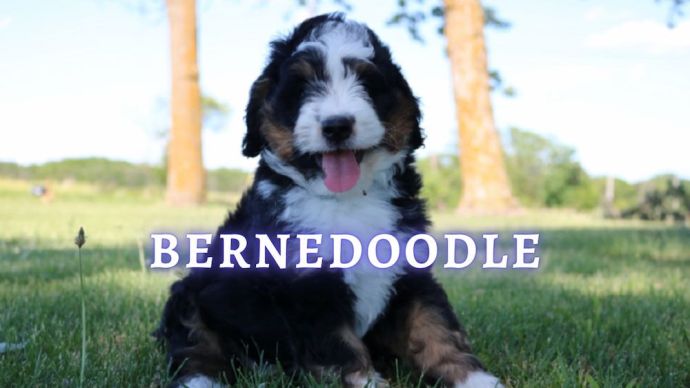 Dog Breeds Bernedoodle: Bernese Mountain Dog and Poodle Mix Personality, Temperament, Grooming and Adoption
Dog Breeds Bernedoodle: Bernese Mountain Dog and Poodle Mix Personality, Temperament, Grooming and Adoption - 639
- 0
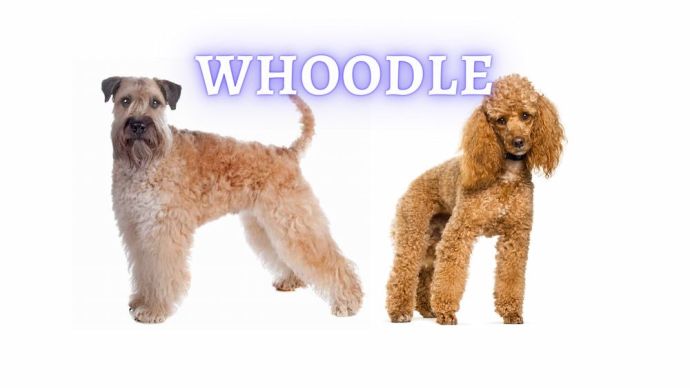 Dog Breeds Whoodle: Wheaten Terrier Poodle Mix Breed Care, Temperament and Adoption
Dog Breeds Whoodle: Wheaten Terrier Poodle Mix Breed Care, Temperament and Adoption - 260
- 0
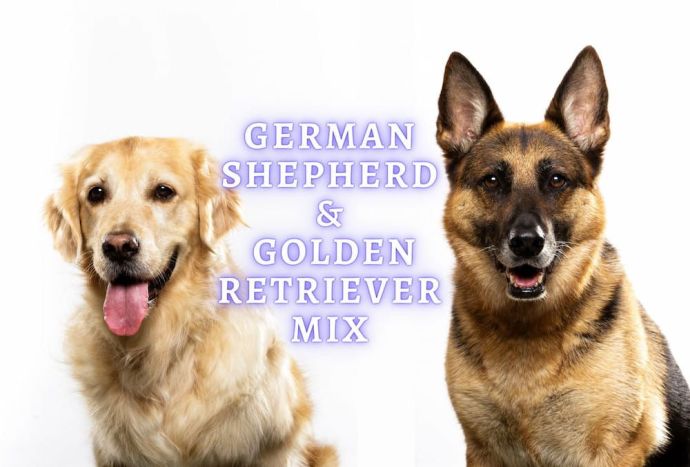 Dog Breeds German Shepherd Golden Retriever Mix: Golden Shepherd Temperament, Care and Adoption
Dog Breeds German Shepherd Golden Retriever Mix: Golden Shepherd Temperament, Care and Adoption - 577
- 0
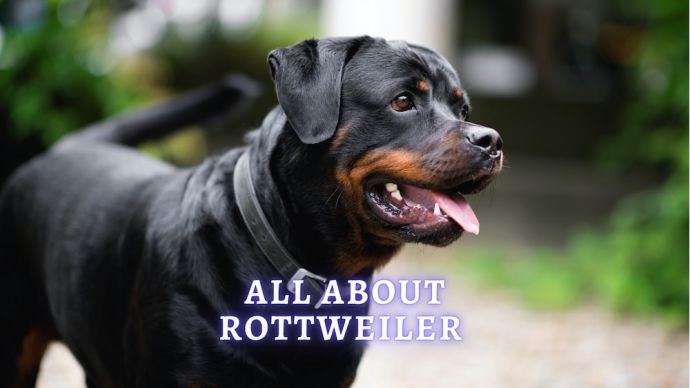 Dog Breeds Rottweiler: Rottweiler Dog Breed History, Personality and Health Care
Dog Breeds Rottweiler: Rottweiler Dog Breed History, Personality and Health Care - 149
- 0
 Dog Veterinary Tips Why is my Dog throwing up: Causes and Preventing (Veterinary Advice)
Dog Veterinary Tips Why is my Dog throwing up: Causes and Preventing (Veterinary Advice) - 23424
- 5
 Dog Care Why Is My Dog Bleeding From Its Butt? Causes and treatment of rectal bleeding in the dog
Dog Care Why Is My Dog Bleeding From Its Butt? Causes and treatment of rectal bleeding in the dog - 22076
- 0
 Dog Care My Dog Keeps Scratching His Mouth: Reasons Why Your Dog Scratching Face
Dog Care My Dog Keeps Scratching His Mouth: Reasons Why Your Dog Scratching Face - 17561
- 1









